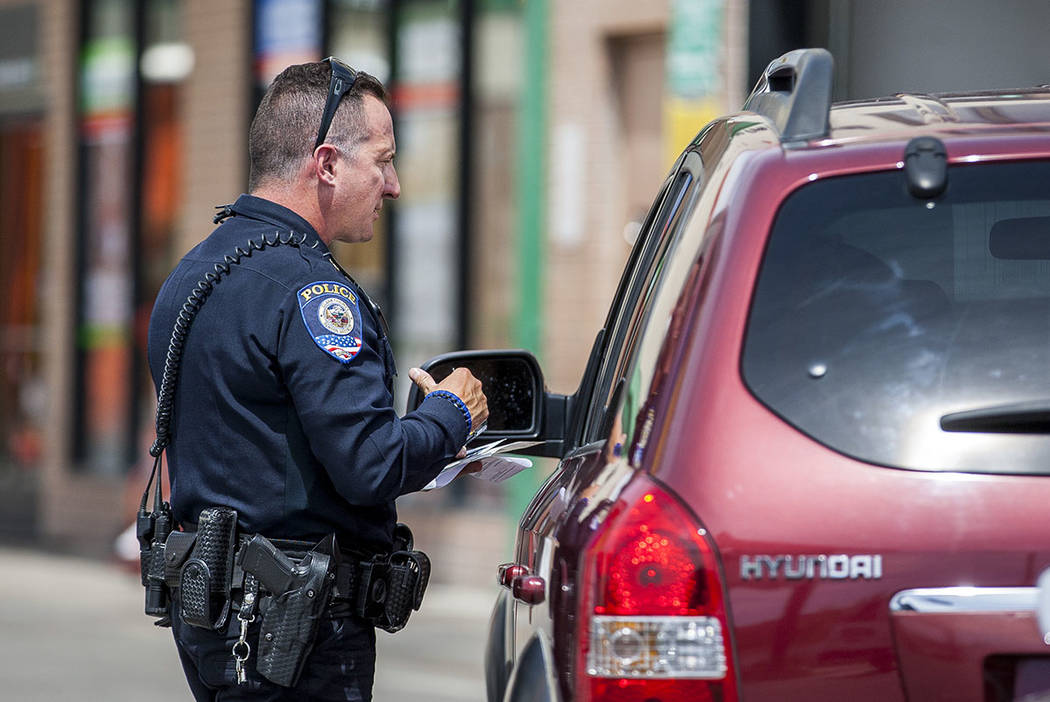Nevada receives failing grade for passage of road safety laws
When it comes to road safety, Nevada gets a failing grade.
That’s the conclusion of Advocates for Highway and Auto Safety, whose latest Roadmap of Highway and Auto Safety report ranked Nevada as one of the 12 worst states for adoption of 16 essential traffic laws.
As a result, Nevada fell into the red group of states, in the three-color system based on traffic signal colors, with green being the best and red the worst.
Being in the red meant the state had fewer than seven of the 16 featured traffic laws in place and is considered to be dangerously behind in adoption of the organization’s recommended optimal laws, the report stated.
Nevada has six of the recommended 16 traffic laws in place. The state with the fewest is South Dakota, which has two.
“The goal of this issuance of this red rating is not to shame these states, but rather to serve as a clarion call to action,” said Mary Jagim, consumer vice chair of the Advocates for Highway and Auto Safety’s board of directors. “Every positive step that each legislature takes leads to the ultimate goal of this report, all states getting the 16 laws on the books and attaining a green rating, which will result in our nation’s roads being safer for all families.”
Seven states were in the green category, meaning they had 11 to 16 of the laws in place and are considered significantly advanced toward adopting all of the recommended laws. No state had all 16 laws on the books, with Rhode Island having the most with 13.
Thirty-one states were in the yellow category, with six to 10 of the laws adopted, and are considered to need improvement.
The report states that in 2018 there were 380 fatalities on Nevada roads and 2,850 from 2008 to 2018.
The annual economic impact of all motor vehicle crashes in Nevada is pegged at $1.98 billion, according to the Advocates report.
The highway laws that the report said Nevada needs to implement are:
— Primary enforcement seat belt law (front and rear).
— Rear-facing car seats through age 2.
— Booster seat law.
— Graduated driver’s licensing minimum age of 16 for learner’s permit.
— Stronger supervised driving requirements for beginning drivers.
— Nighttime driving restrictions for younger drivers
— Stronger passenger restrictions for younger drivers.
— Age 18 for unrestricted license privileges.
— Cellphone restriction for younger drivers.
Department of Public Safety spokesman Andrew Bennett said state officials are aware of the grade and have their own way of looking at safety.
“Nevada has always taken the five-‘E’ approach to traffic safety. One of these ‘E’s’ includes enforcement. Enforcement starts with legislative action and ends with prosecution,” Bennett said. “This report highlighted several areas where Nevada has room for improvement in regards to our traffic laws.”
Bennett pointed out that Nevada has some of the most robust impaired-driving laws in the nation but acknowledged there was room for improvement with teen-driving laws.
Although the report highlighted what various states did during legislative sessions in the last year, it did not mention what Nevada’s actions were.
“Nevada was one of the only states to expand a mandatory helmet law to include mopeds,” Bennett said. “The Office of Traffic Safety is always looking at national best practices that can be applied to Nevada to keep our roadways safe.”
Send questions and comments to roadwarrior@reviewjournal.com. Please include your phone number. Follow @mickakers on Twitter.























